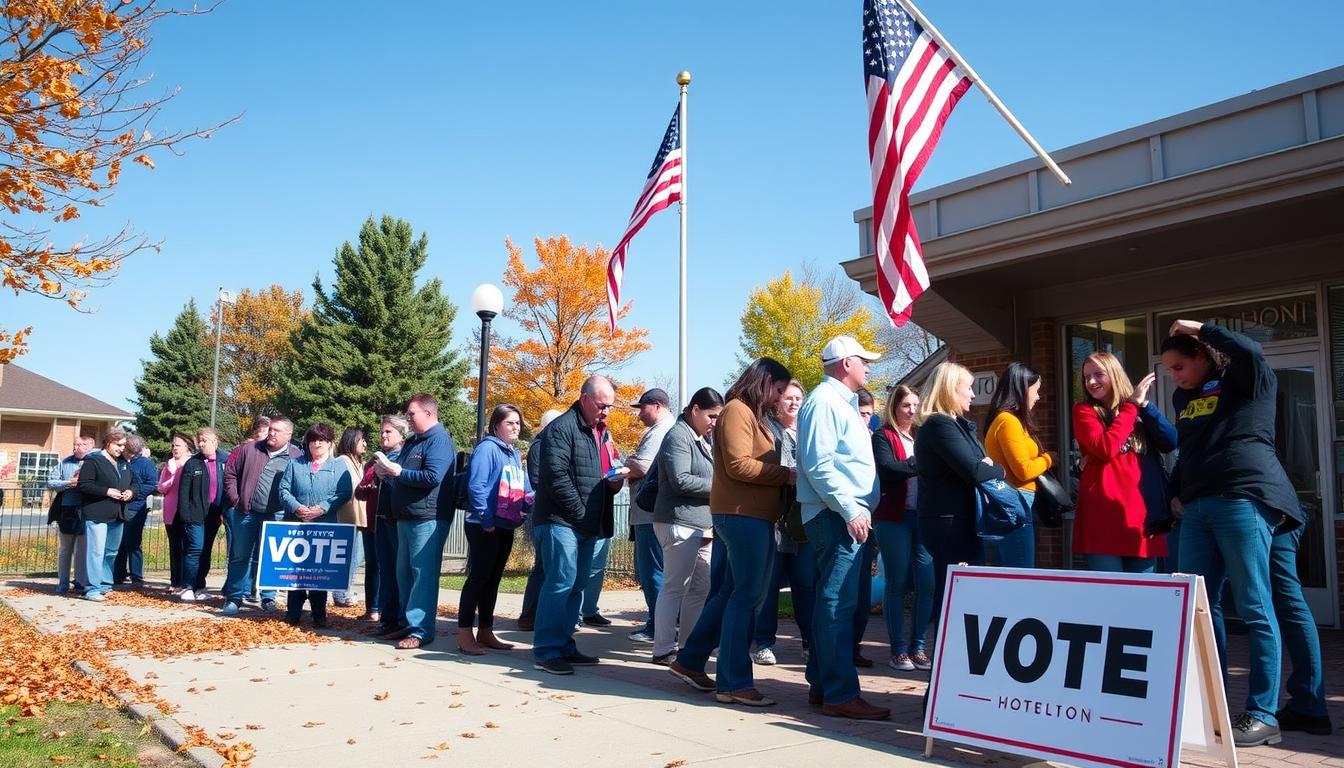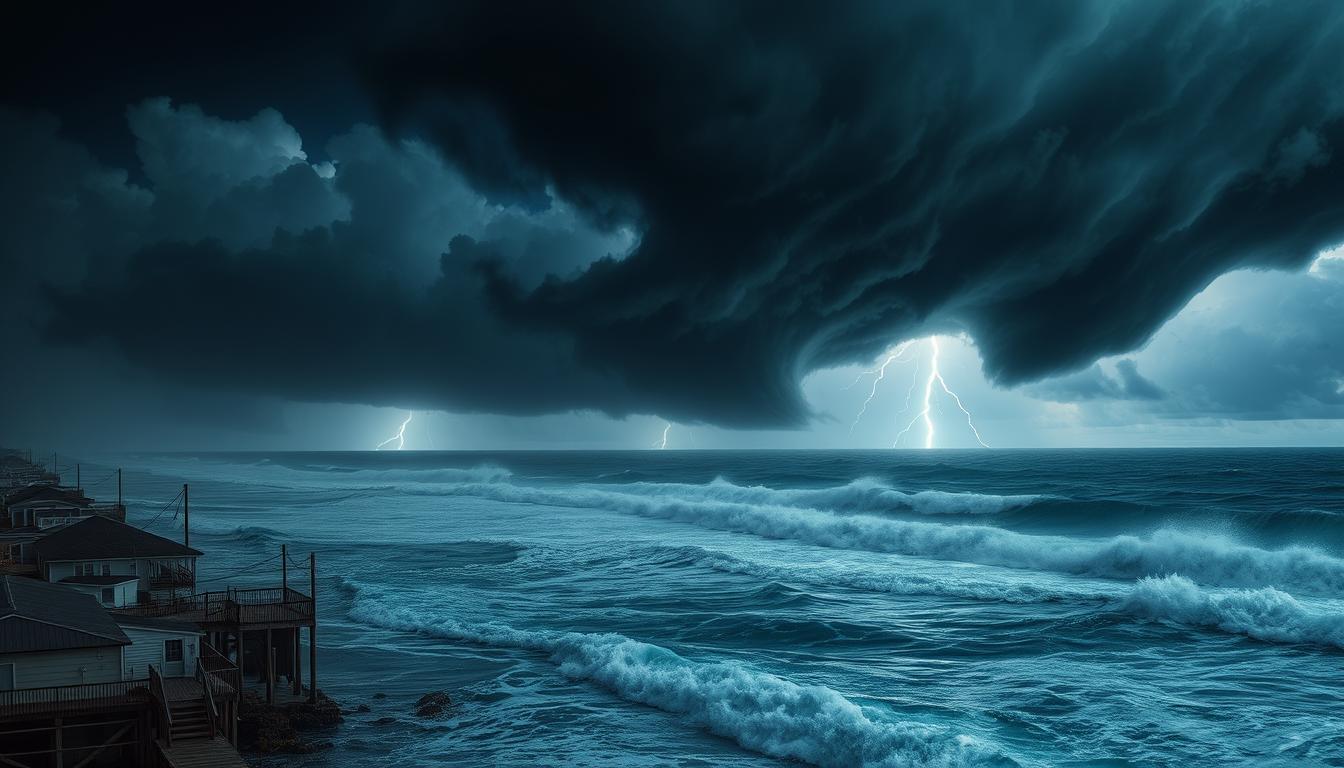As hurricane season starts, it’s vital to stay informed and ready. Did you know hurricane watches are given 48 hours before strong winds hit? Hurricane warnings come 36 hours before the storm’s strongest winds arrive. Knowing these alerts can save lives.
Key Takeaways
- Tropical cyclone advisories are issued at least every 6 hours by the National Hurricane Center (NHC) and the Central Pacific Hurricane Center (CPHC).
- Tropical Storm Watch and Warning indicate possible and expected sustained winds of 39-73 mph, respectively.
- Hurricane Watch and Warning alert for possible and imminent sustained winds of 74 mph or higher.
- Storm Surge Watch and Warning highlight the possibility and threat of life-threatening flooding from rising water levels.
- Paying close attention to local officials’ instructions, including evacuation orders, can be critical for survival.
Understanding Tropical Cyclone Alerts and Advisories
When tropical cyclones are near, knowing about alerts and advisories is key. These warnings give you vital info to stay safe and get ready for what’s coming.
Tropical Storm Watch and Warning
A Tropical Storm Watch means winds of 39 to 73 mph might hit in 48 hours. A Tropical Storm Warning is for when these winds are expected in 36 hours. You need to act fast to protect yourself and your stuff.
Hurricane Watch and Warning
A Hurricane Watch warns of winds over 74 mph in 48 hours. A Hurricane Warning means these strong winds will hit in 36 hours. This is a serious warning for dangerous conditions.
Storm Surge Watch and Warning
A Storm Surge Watch warns of dangerous flooding from storm surges in 48 hours. A Storm Surge Warning means flooding is coming in 36 hours. You must act quickly to avoid deadly flooding.
Knowing about these alerts helps you make smart choices. It keeps you and your family safe during bad weather.
Stay Informed: Tracking Tropical Cyclone Forecasts
When a tropical cyclone forms, the National Hurricane Center and the Central Pacific Hurricane Center issue Tropical Cyclone Public Advisories every 6 hours. These advisories give vital info on the cyclone’s location, wind speed, direction, and hazards.
Tropical Cyclone Public Advisory
The Tropical Cyclone Public Advisory gives updates on coastal watches and warnings. It also shares the cyclone position, maximum sustained winds, current motion, and hazard description. This info helps communities prepare and stay safe.
Tropical Cyclone Track Forecast Cone
The Tropical Cyclone Track Forecast Cone shows the cyclone’s predicted path. The cone’s width shows the forecast uncertainty. Remember, the storm’s effects can reach far beyond the cone, including tornadoes and inland flooding.
| Hazard | Description |
|---|---|
| Storm Surge | Life-threatening inundation within 36 hours |
| Tropical Storm Winds | Sustained winds of 39-73 mph expected within 36 hours |
| Hurricane Winds | Hurricane-force winds (74+ mph) expected within 36 hours |
By keeping up with the National Weather Service’s tropical cyclone updates, communities can prepare for the storm effects. This helps protect lives and property.
Tropical cyclone warnings and watches: Essential Preparedness Measures
When severe tropical weather threatens, knowing the difference between watches and warnings is key to staying safe. Alerts like Tropical Storm Watch and Hurricane Watch mean dangers may come. Tropical Storm Warning, Hurricane Warning, and Storm Surge Warning mean dangers are near, so act fast.
The Atlantic and Caribbean hurricane season is from mid-August to late October. People in danger zones should check their safety plans, stay informed, prepare their homes, and be ready to leave if told to. Being proactive can save lives and property.
Securing Your Home
Strengthening your home’s exterior is key to protect against wind and debris, research shows. This means:
- Trimming trees and removing dead or weak branches to prevent damage.
- Having plywood, sandbags, and other materials ready to protect your home.
- Ensuring windows, doors, and roof systems are secure and reinforced.
Evacuation Planning
When a tropical cyclone warning is issued, being ready to leave quickly is vital. Create a plan that includes:
- Finding safe evacuation routes and destinations.
- Gathering important documents, medications, and personal items.
- Telling family about the evacuation plan.
- Securing your home by shutting off utilities and unplugging appliances.
Remember, flood insurance costs about $300 a year for $100,000 of coverage. It’s a good way to protect your property. There’s usually a 30-day wait before coverage starts.
| Tropical Cyclone Preparedness Checklist | Completed |
|---|---|
| Review and update your emergency plan | |
| Secure your home and property | |
| Gather essential supplies and documents | |
| Stay informed about the storm’s progress | |
| Be prepared to evacuate if necessary |
By preparing for tropical cyclones, you can keep your family safe and protect your property. Stay alert, informed, and safe during storm season.
Local Advisories and Impact Graphics
As a tropical cyclone gets closer, local National Weather Service (NWS) offices give out important updates. The Hurricane Local Statement gives a quick summary of what the storm might bring and what steps to take. It helps people, leaders, and the media stay up-to-date and act quickly.
Hurricane Local Statement
The Hurricane Local Statement has a storm impact summary and preparedness information for the local area. It talks about wind speeds, rain, coastal flooding, and other dangers. This helps communities make smart choices and get ready for safety.
Tropical Cyclone Threats and Impact Graphics
The NWS also makes tropical cyclone impact graphics to show the possible hazard impacts and threat assessment. These graphics show what to expect, like wind, flooding, and tornadoes. They help people get ready for the storm.
By watching the Hurricane Local Statement and impact graphics, communities can stay informed. They can take steps to lessen the storm’s risks. These important tools help people and local leaders make safe choices for their areas.
Conclusion
Understanding tropical cyclone preparedness is key for community safety. Knowing about alerts and advisories helps a lot. It’s also important to watch weather forecasts and follow local authorities’ advice.
Being aware of tropical cyclone threats helps people make smart choices. They can prepare homes, secure properties, and even evacuate if needed. This proactive approach reduces risks and makes communities more resilient.
As tropical cyclones get more frequent and intense, staying alert is critical. Communities must stay connected to reliable weather sources. Working together, we can build a culture of preparedness. This way, we can face tropical cyclones stronger and better protect lives and property.
















Leave a Reply